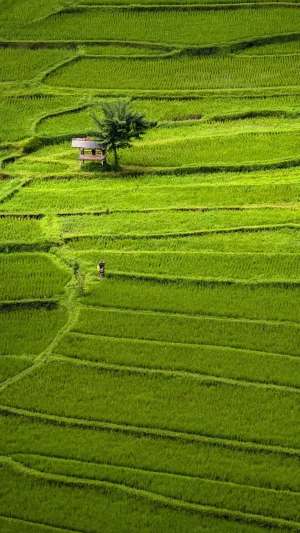Rice cultivation spans across continents, with Asia, Europe, America, Africa, and Oceania all participating in its production.
Asia shoulders the lion's share, contributing to 90% of the world's rice output, while Africa, America, and Europe collectively contribute 10%, with 6.0%, 4.3%, and 0.4% respectively.
Leading the charge in rice cultivation are India and China, which account for 28.1% and 18.5% of the global rice cultivation area, respectively.
The prerequisites for successful rice growth are multifaceted. The following are the conditions required for rice growth:
1. Rice flourishes under abundant sunlight. Shortened daylight exposure during rice cultivation can lead to stunted plant growth, resulting in decreased rice yield. Ensuring a minimum of six hours of sunlight per day is essential to enhance photosynthesis, thereby promoting robust plant development.
2. Rice thrives in warm environments, necessitating specific temperature ranges for successful cultivation. Ideal ambient temperatures range between 86-89.6°F, while water temperatures should be maintained between 89.6-93.2°F.
These conditions are crucial for enhancing the survival rate of rice plants. Optimal planting time falls between April and May each year, aligning the growth period of rice with the warmer summer months.
3. The soil texture requirements for rice cultivation are relatively flexible, allowing for growth in diverse environments including sand, loam, and clay. However, the most conducive soil type for optimal rice growth is deep, well-structured loam with high organic content.
4. Throughout the rice growth season, an average water supply ranging between 700 and 1,200 mm is typically required. Increased humidity correlates with enhanced photosynthesis, a vital process for rice development.
Adequate irrigation is essential to ensure the vitality and resilience of the root system, facilitating the absorption of nutrients and promoting the accumulation of leaf sugars and starches.
Furthermore, sufficient water supply supports the efficient transportation of essential materials within the plant, ultimately contributing to healthy growth and optimal yield.
Across the globe, several rice fields showcase not only the agricultural prowess but also the breathtaking beauty of this staple crop.
One such marvel is the Banaue Rice Terraces in the Philippines, a testament to ancient farming ingenuity. Constructed over 3,000 years ago on Luzon Island, these terraces span approximately 400 square kilometers, with the Barnava rice terraces standing out as particularly spectacular.
Vietnam's Sapa Rice Fields, renowned for their picturesque landscape, have flourished for centuries. Nestled in the hills of northern Vietnam, these terraces form rhythmic patterns amidst valleys, creating a mesmerizing vista, especially during the golden harvest season. The terraces not only provide sustenance but also serve as a paradise for photography enthusiasts.
Vietnam's Sapa Rice Fields
Video: Trekking Tour Sapa
In Japan's Ishikawa Prefecture, the irregularly shaped rice fields present a unique aesthetic. As autumn arrives, the rice fields transform into a sea of golden hues, resembling abstract paintings that captivate the senses.
Beyond their agricultural significance, these fields offer solace and relaxation, attracting visitors seeking tranquility amidst nature's beauty.
As rice fields continue to thrive and evolve, they remind us of the essential role agriculture plays in shaping landscapes and cultures worldwide. Whether as a source of sustenance or a sight of breathtaking beauty, rice fields stand as symbols of resilience and harmony in an ever-changing world.





